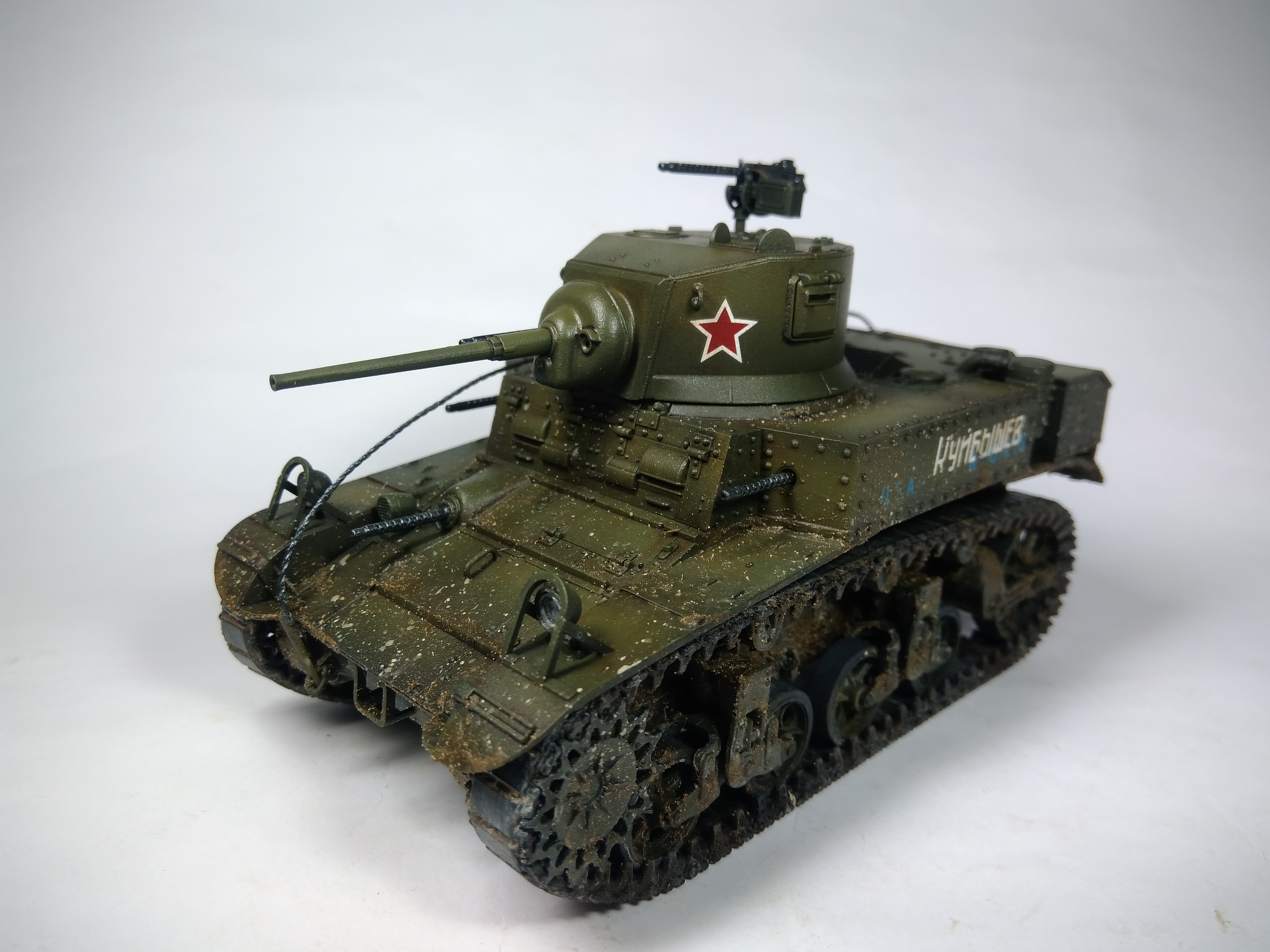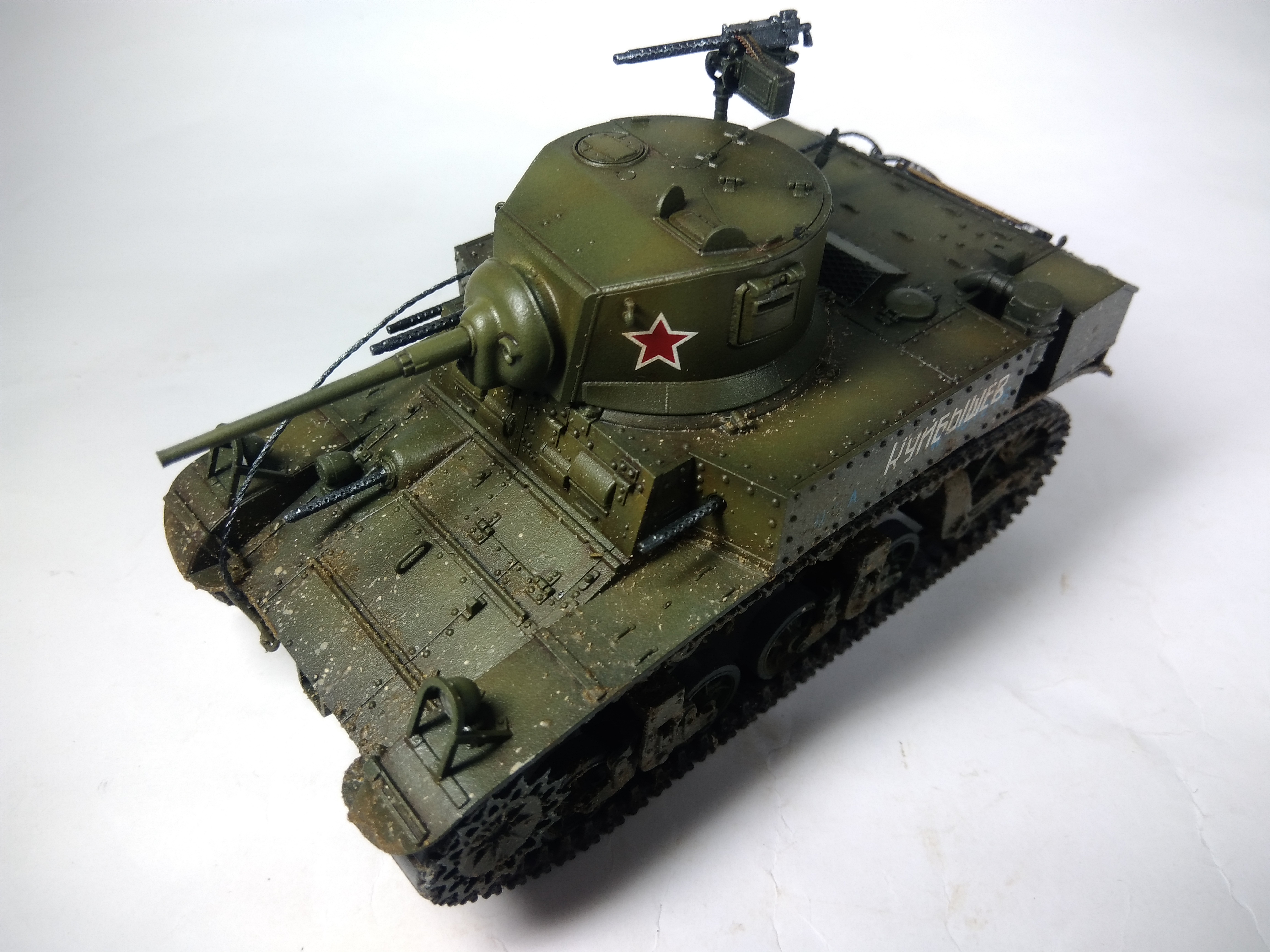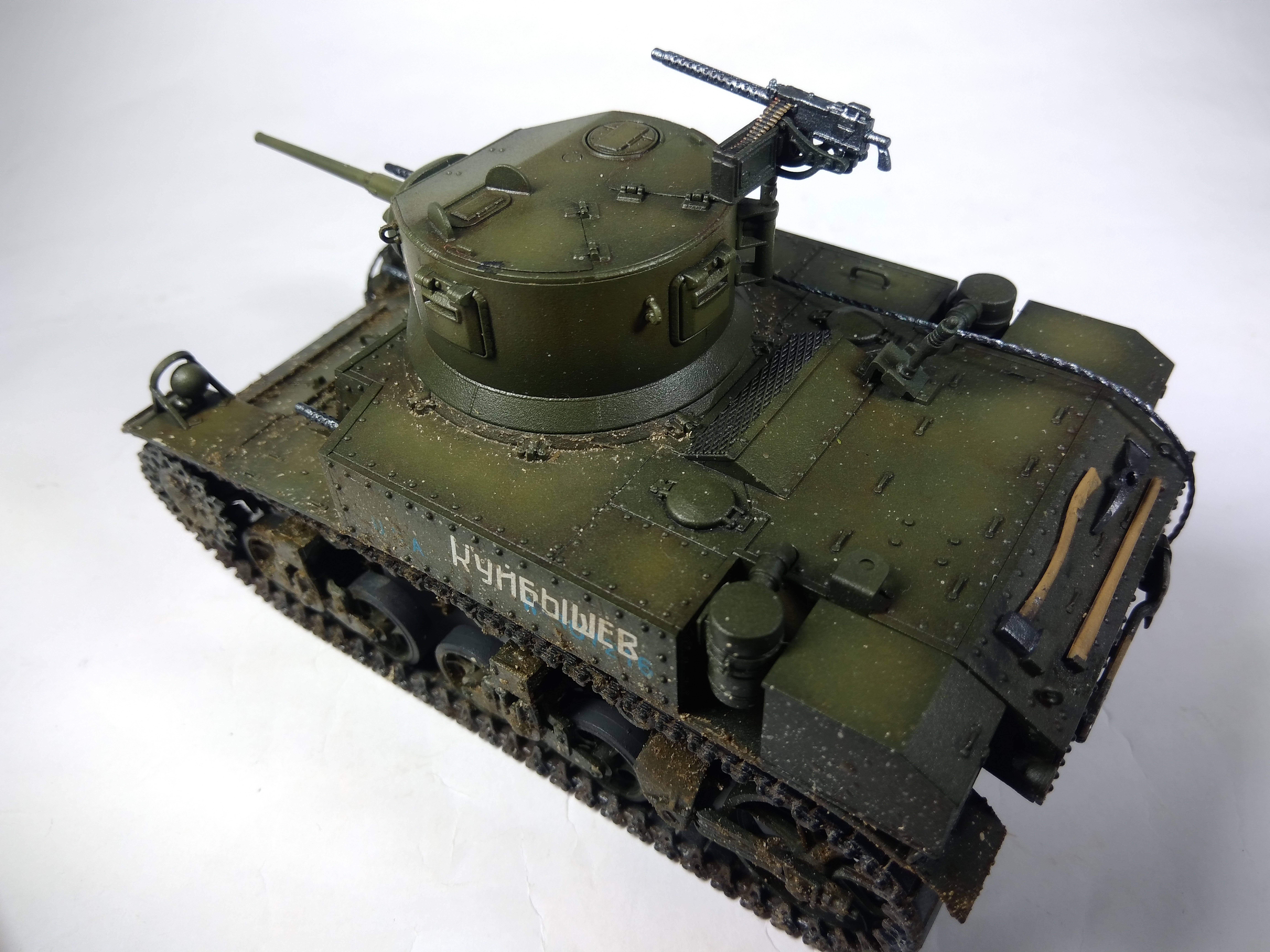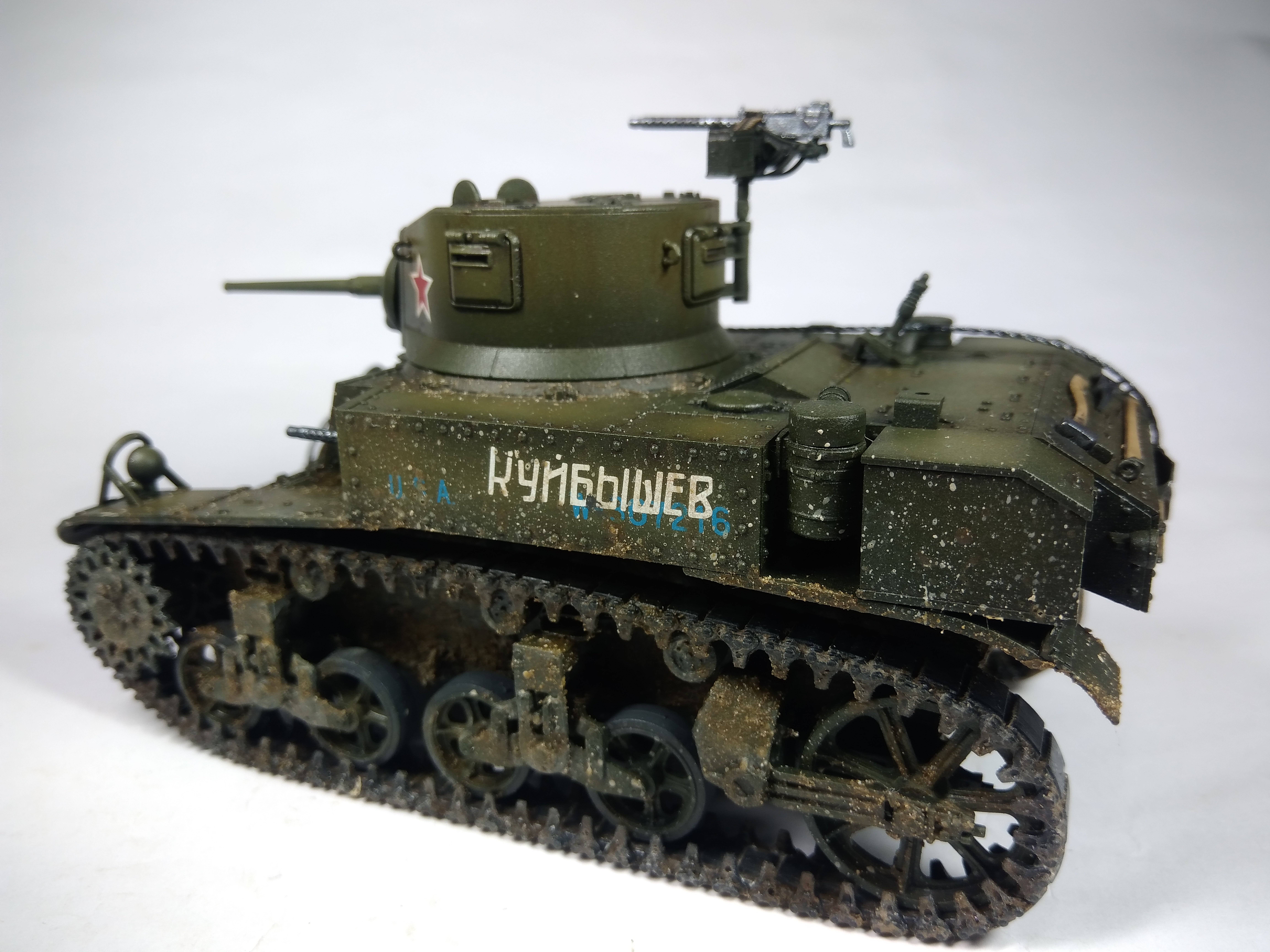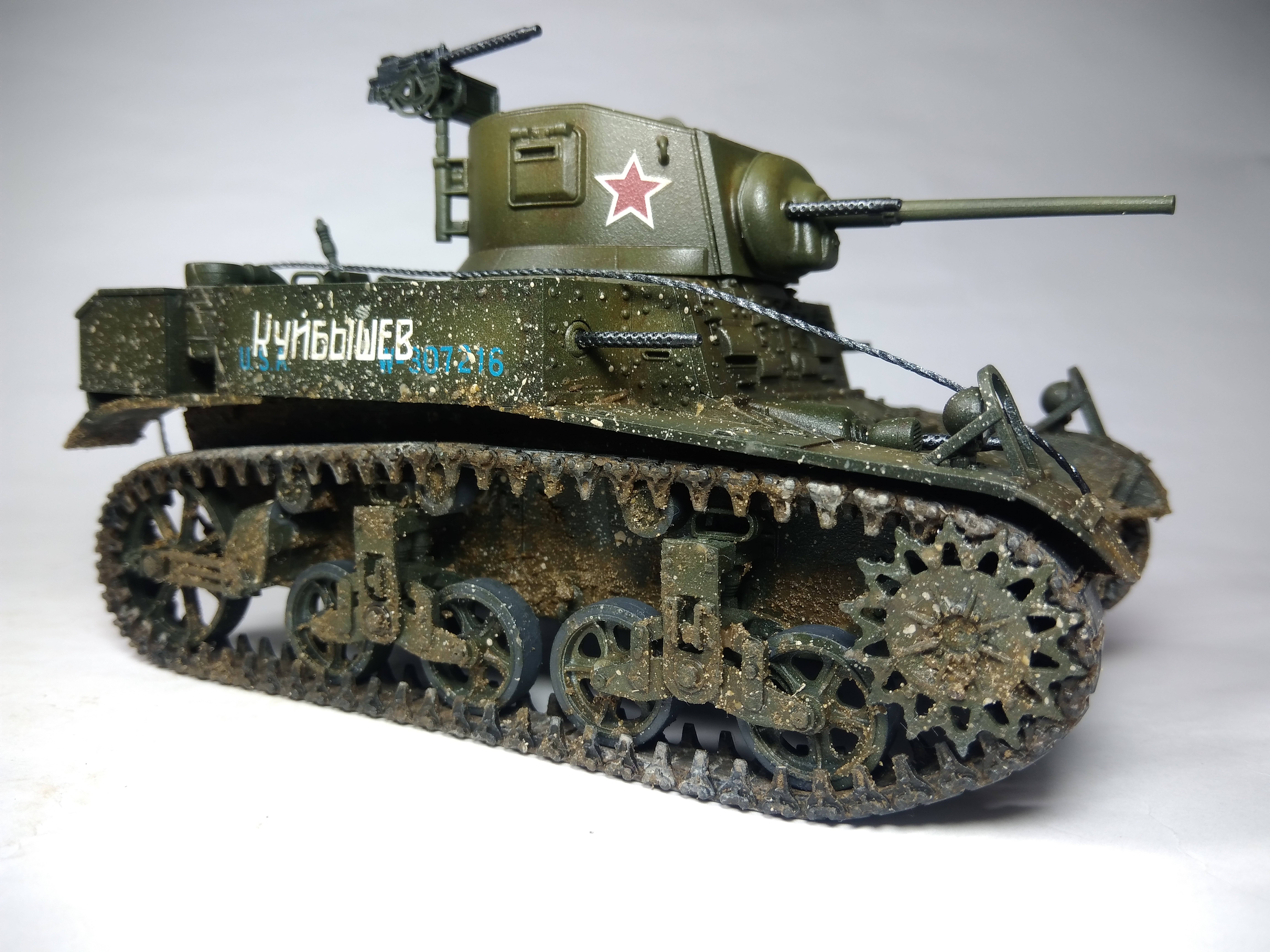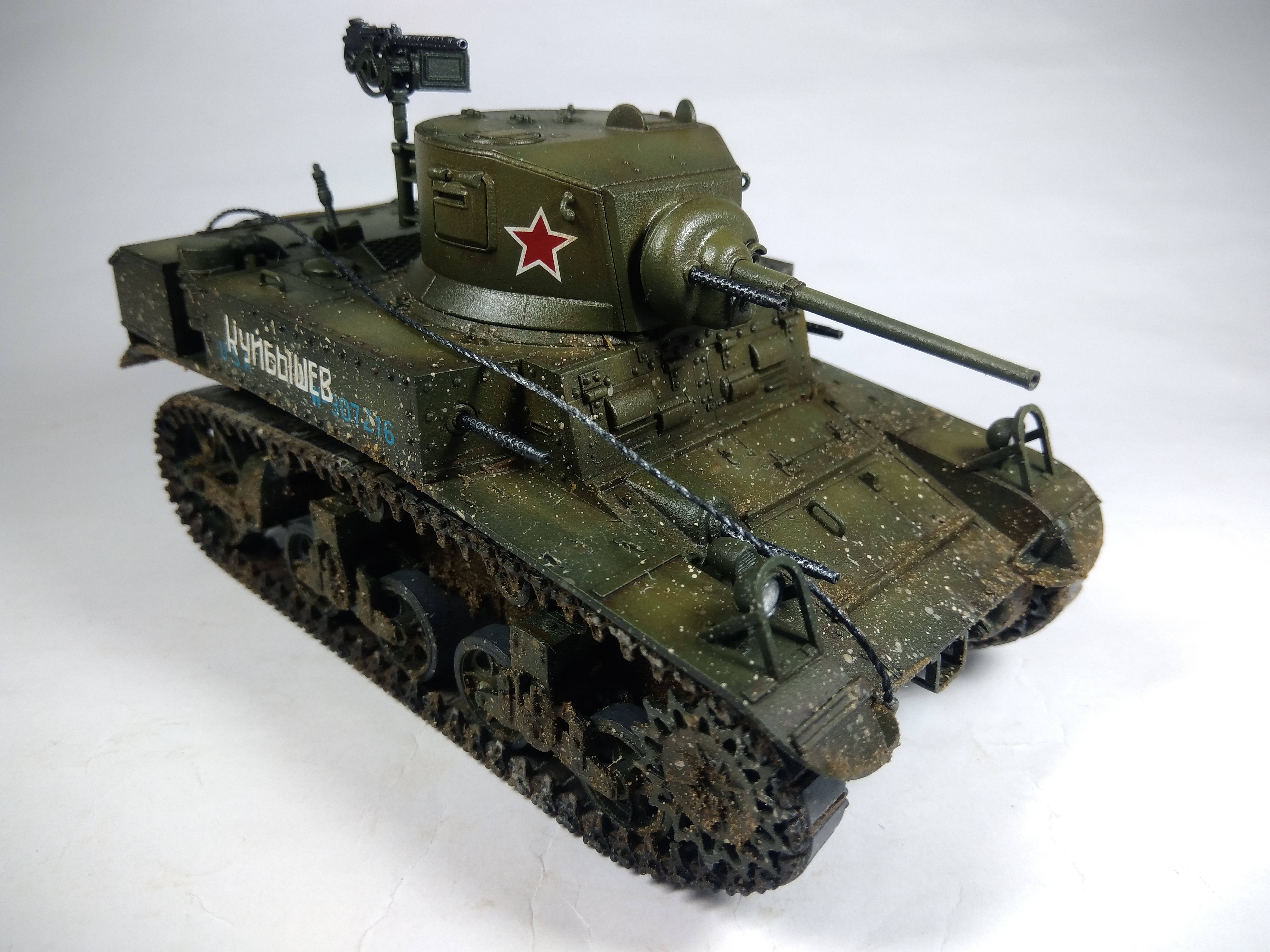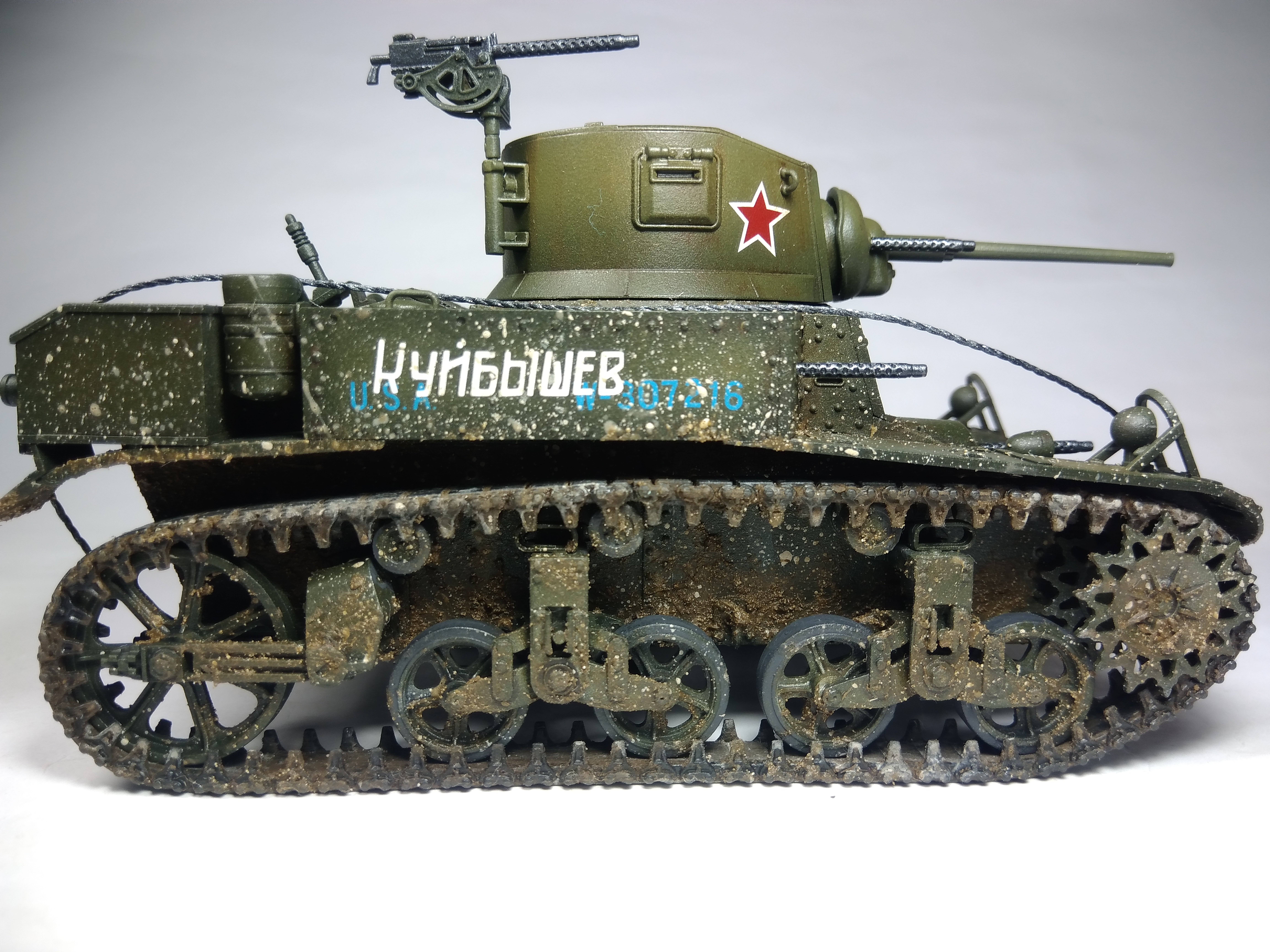Quoted Text
@TopSmith - thanks for pointing that out. I haven't been able to tone down the sheen on the kit very well. I might have to apply another dull coat.
You should have been able to get the surface absolutely flat (matte) with a flat overspray. What are you using, if I may ask?
Quoted Text
For the slightly gloss sheen, would you recommend applying an overall dullcoat to tone everything down, or should I apply a very thin layer of dust with either oils or pigments?
Overspray the areas to be dry with a good flat coat. try to modulate that effect to the extend you want areas to be wet or dry. Generally wetter towards the bottom of vertical surfaces and the underside where the suspension is. Make it look a bit dryer than your desired end state as we'll add more wet afterwards.
Once you have the overall level of wet/dry established, you can go in add an overall dark wash to the crevasses and around rivet heads.
Next add some streaking. One of the techniques used for this is to put very small dots of several artists' oil paint colours and then using a brush damp with thinner, streak those dots down the surfaces until most of it is gone, but a continuously varying hint of colour remains, this provides a lot of variation in the finish. You can add or subtract layers of this in several colours all over the vehicle to break up the uniformity of the colour without making major changes. The colours used vary depending on the supposed environment of the model, however, in your case, with it being wet, stick to the darker colours like van dyke brown, brunt sienna, with only a little white, ochre and sienna. You can look up the oil dot technique on YouTube and I'm sure there are a lot of videos there to get you started .
After that dries (and it will take days with oils, so don't rush it) you can now come back and add more wet where you want it to creep back up into the dry areas. Remembering that water accumulates in the corners and such, areas around welds, rivets, indentation etc. will have a bit more gloss/wet look than open flat areas. I like to use pictures of construction equipment to get a feel for where and how water and mud accumulate in real life.
When all that dries you can add some pigments, sparingly as you don't want to get the dry into the wet areas, to provide interest , but remember, it's just been raining, so even this dust can be streaked to show interest.
There are a whole lot more methods to get the effects you want and there are a lot of sites and videos out there to help you along. Study them and practice.
And remember, you're absolutely not going to produce models like you see from the best guys without many years of practice, so if your end result is something that doesn't look amazing, remember not to beat yourself up about it. The good guys do this a LOT and have been doing it for many years. Your basic building techniques are on solid ground and you already have a good start with this model.
Just keep plugging.
As for the rear deck, gasoline residue (that light brown/grey staining that also picks up dirt and oil) around the gas caps are definitely a thing and do not indicate poor maintenance. These guys were busy fighting a war. Cleaning up every dribble of oil or gas simply wasn't a priority. In peacetime, the RSM would make you spit polish your tank twice a day. In wartime, he's trying to make sure his people aren't getting killed. Tanks got and still get incredibly dirty and beat up in combat.
Paul
